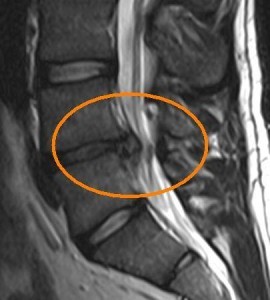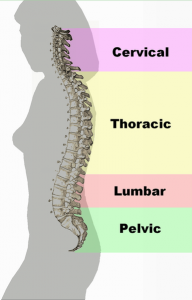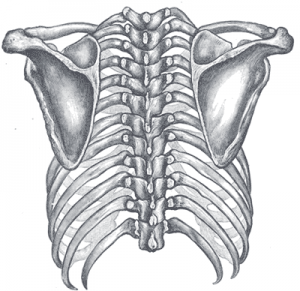Back Pain and Spinal Anatomy
The ability to walk upright, which is distinct to us humans, puts a large amount of stress on the back. The back has the ability to withstand a considerate amount of burden and still perform its varied functions. Improper posture, lifting heavy weights, performing unaccustomed activities, and sports injuries, tend to exceed this normal tolerance, giving rise to the increasingly common symptom of back pain.
What is back pain?
Back pain is the most common reason for remaining absent from work and results in tremendous economic losses. The significance of this is more so felt, when a person is unable to find a permanent cure for the backache and is unfit to resume their earlier job. This happens in 10-15% cases of back pain ! Thus, it is very important to take proper care of our back and ensure that we do not fall prey to backache.
Picture 1: Para spinal Muscles of Back
(Source: Wikimedia Commons)
The human back is an intricate arrangement of muscles (para spinal muscles), bones (vertebrae) and cartilage (intervertebral disc), which give stability and mobility to perform several activities. Muscles of the back (Picture 1) are a potential source of back pain due to bad posture, which is the commonest cause of back pain. The vertebrae are affected by injuries, like road accidents and falls from a height; infections, tumors, and so on. The intervertebral disc’s function primarily as a shock absorber and so after repititive stress are a site for degenerative processes. A degenerated disc losses its elasticity and becomes stiff. It also bulges out towards the spinal cord and nerves (Picture 2), compressing them and causing shooting pain in the area supplied by that nerves.
Picture 2: Intervertebral disc bulging on MRI
(Source: Wikimedia Commons)
This process may extend and cause complete paralysis of both lower limbs with incontinence (loss of voluntary control) of urine and stools. Thus, back pain should never be taken lightly and medical care should be sought for reaching a diagnosis and prompt initiation of treatment
Spinal Anatomy in Back Pain
The human back is divided into upper back, which consists of thoracic vertebrae, and the lower back which consists of lumbar vertebrae. Vertebrae are small bones (Picture 1), which are stacked one above the other like beads over a thread (spinal cord), which protect the spinal cord and provide gliding movements between adjacent vertebral junction. The movement at each junction is very limited but as a unit the movement of the entire chain is quite significant like forwards bending, backwards bending, side bending, and so on. This is also the reason, why disease at a single junction causes all back movements to become painful. The lower thoracic vertebrae are not capable of much movement and are referred to as the middle back.
Picture 1: Types of Vertebra
(Source: Wikimedia Commons)
The upper back (Picture 2) supports the chest and gives out ribs which curve around the chest to protect the lungs and heart forming the rib cage. This part of the back is normally the site of many grave diseases like birth defects, infections, and tumors. These diseases normally occur in the relatively immobile vertebrae of the middle back. Thus, the pain from these diseases is called as middle back pain. This type of pain is not very common but when present needs a through evaluation by an orthopedist. These diseases present with or become obvious after some structural abnormalities of the vertebrae. Hence, treatment is mostly surgical.
Picture 2: Upper Back Skeleton (from behind)
(Source: Wikimedia Commons)
The lower back bears the weight of the head, chest, as well as the abdominal organs. These vertebrae are strong and stout and have strong muscles for performing bending movements with the load of the body. They are a common site for degenerative diseases, like slipped disc, spinal arthritis or slipped vertebra, which give rise to low back pain. Owing to the stresses of erect posture and the bad habits of improper posture and obesity, low back pain is several times more common than upper or middle back pain. The causes of low back pain range from trivial muscular spasms to severe compression of spinal cord or nerves. Thus, depending on the cause the treatment options are varied ranging from back strengthening exercises to vertebral fusion surgeries.
Back pain in a person gives rise to a plethora of possibilities, which can only be ruled out by meticulous and timely investigations to lead to a final diagnosis and treatment.








